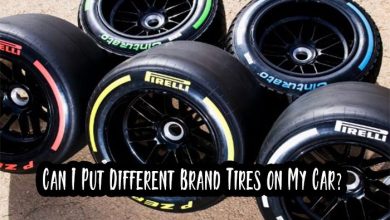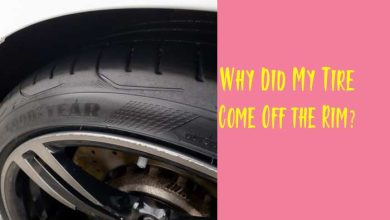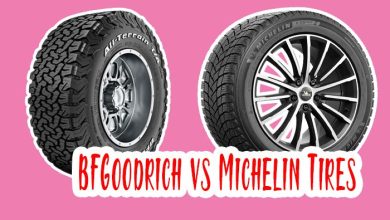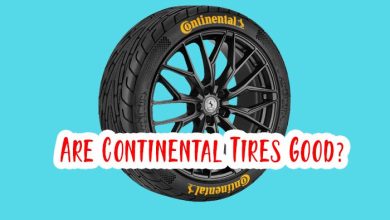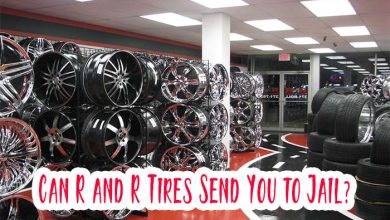Bubble In My Tire | Should I Drive or Not?
You should not drive with a small bubble in your tire. A bubble in your tire is a sign that the tire’s internal structure has been damaged. T
Picture this: you’re cruising down the open road, wind in your hair, and suddenly, you feel an unexpected bump. Your heart skips a beat as you contemplate the possibility of a bubble in your tire.
Fear not, fellow road warrior, for in this tire-centric odyssey, we’ll delve into the intricacies of tire bubbles, from their causes to the pressing question—can you continue driving with a bubble in your tire?
Read Also: Can Broken Glass Pop a Tire?
Causes of Tire Bubbles in Car
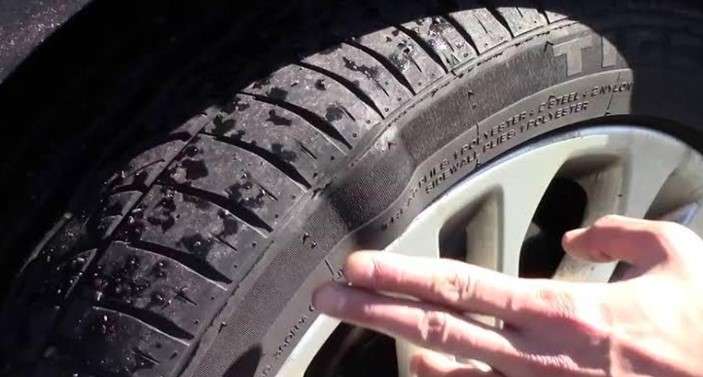
Tires, those unsung heroes of the road, bear the weight of your adventures. But what causes these trusty companions to develop bubbles? Let’s break it down:
- Potholes and Road Hazards: Potholes, those craters of chaos, are tire bubble culprits. Hitting one can weaken tire structure, paving the way for bubbles.
- Manufacturing Defects: Even the sturdiest tires may succumb to manufacturing imperfections. These defects can manifest as bubbles, jeopardizing your smooth ride.
- Underinflation: Picture your tire as a balloon. Weak spots may emerge if it’s not adequately inflated, eventually forming the dreaded bubble.
- Impact Damage: Striking a curb or object can cause internal damage to the tire, setting the stage for bubble formation.
Can I Drive with a Bubble in My Tire?
No, you should not drive with a bubble in your tire. A bubble in your tire is a sign that the tire’s sidewall has been damaged and is no longer safe to drive on. The bubble is caused by separating the tire’s inner layers, which can weaken the tire to the point where it could blow out at any time.
Driving with a bubble in your tire puts you and your passengers at risk of a serious accident. If the tire blows out, you could lose control of your car and crash. You could also be injured by flying debris from the tire.
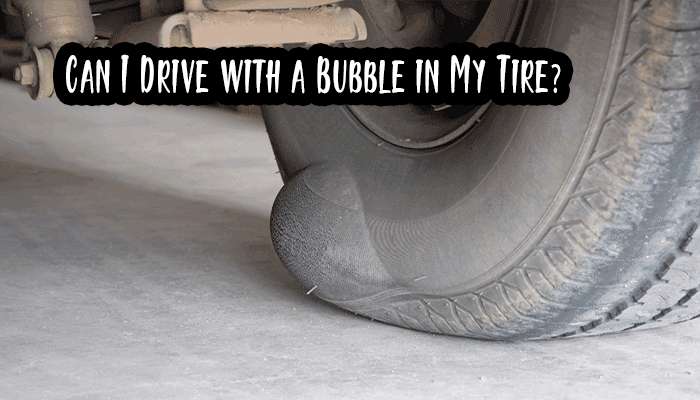
If you see a bubble in your tire, you should stop driving immediately and have the tire replaced. Do not attempt to repair the tire yourself, as this will not restore its structural integrity. Take your car to a qualified tire repair shop as soon as possible.
Here are some additional tips for dealing with a bubble in your tire:
- If you cannot stop driving immediately, drive slowly and carefully to a safe location.
- Do not exceed the speed limit.
- Avoid sudden stops or turns.
- Do not overload your car.
- Check your tire pressure regularly.
Risks Associated with Driving on a Bubble
1. Tire Blowout
The most serious risk associated with driving on a tire with a bubble is a blowout. A blowout occurs when the tire’s sidewall ruptures, causing the tire to lose air pressure suddenly. This can cause the driver to lose control of the vehicle and lead to a serious accident.
2. Loss of Control
If a tire blows out while you are driving, you may lose control of your vehicle. This can be especially dangerous if you drive at a high speed or on a wet or slippery road. Losing control of your vehicle can lead to a skid, a spin, or a rollover accident.
3. Injuries
A tire blowout can also cause injuries to the driver and passengers of the vehicle. The force of the blowout can cause the tire to shred, sending pieces of rubber flying through the air. These pieces of rubber can cause cuts, bruises, and other injuries.
Repairing a Tire Bubble
So, you’ve spotted a bubble and now wonder if it’s salvageable. Fear not, intrepid driver, for in some cases; you can rescue your tire from the bubble menace. Here’s a step-by-step guide:
- Assess the Damage: Gauge the size and location of the bubble. If it’s on the sidewall, repairs are generally a no-go.
- Mark the Bubble: Use chalk or a marker to outline the bubble. This helps both you and the tire professional identify the affected area.
- Seek Professional Help: While DIY fixes might be tempting, tire experts possess the magic touch. Consult a professional to evaluate the bubble and recommend the best course of action.
- Consider Patching: In some cases, a skilled technician may be able to patch the bubble. It’s like giving your tire a superhero cape, ready to conquer the road again.
- Evaluate Tire Age: If your tire has seen better days and the bubble is a recurring guest, it might be time to bid farewell. Old tires are more prone to bubble troubles.
How to Prevent Tire Bubbles?
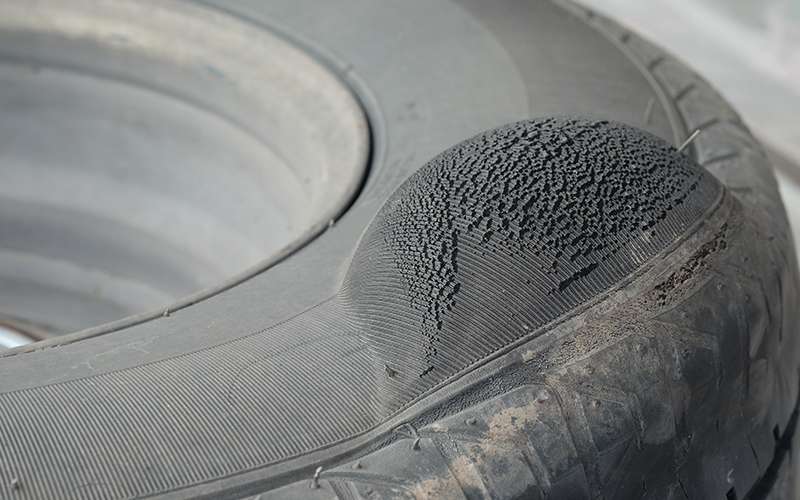
Prevention is the name of the game when it comes to tire bubbles. Arm yourself with the knowledge to keep those tires bubble-free:
- Maintain Proper Tire Pressure: Check your tire pressure regularly and inflate them to the recommended levels. It’s a simple act that pays dividends in preventing bubbles.
- Navigate with Care: Dodge those potholes like a seasoned rally driver. Navigate rough roads with caution, sparing your tires from unnecessary trauma.
- Rotate Your Tires: Even wear is the key to a tire’s heart. Regularly rotate your tires to ensure they share the road burden evenly.
- Quality Tires Matter: Invest in quality tires and bid adieu to manufacturing defects. A good set of tires is your first line of defense against the bubble uprising.
How Long Can I Drive with a Small Bubble in My Tire?
The longevity of your journey with a small tire bubble is akin to a delicate dance. While it may seem manageable in the short run, it’s a gamble with your safety. A small bubble could evolve into a tire catastrophe at any moment, leaving you stranded and pondering the choices that led you to this deflated destiny.
To err on the side of caution, treat a small bubble as a red flag. It is prudent to address it promptly through professional repairs or tire replacement. Remember, it’s not just about the miles you can squeeze from a bubble; it’s about ensuring each mile is a safe and enjoyable ride.
Conclusion
As we bid farewell to our tire saga, let’s confidently embrace the road ahead. Tire bubbles may be unexpected hitchhikers, but armed with knowledge, vigilance, and the occasional tire joke; you’ll navigate the asphalt expanse like a seasoned pro. Feel free to share your tire tales and triumphs, for in the world of rubber and road; every journey is a story waiting to be told.
Reference:
https://www.lesschwab.com/article/tires/how-to-make-your-tires-last-longer.html
Glossary
- Tire Bubble: An abnormal bulge in a tire caused by various factors, posing a potential risk of tire failure.
- TPMS (Tire Pressure Monitoring System): A technology that monitors tire air pressure and alerts drivers to potential issues.
- Sidewall: The side portion of a tire between the tread and bead, vulnerable to damage.
